Our Core Courses
Wilderness First Aid
Wilderness First Responder
Wilderness Emergency Medical Technician
And our Specialty Courses
SOLO’s medical training uses a 4-pronged approach

CLASSROOM: This is the didactic part of our training, the traditional setting where the instructor stands before the students and gives lectures, presentations, and demonstrations, writes on chalkboards or white boards, and sometimes shows videos or PowerPoint presentations. Student participation is greatly encouraged and there is always time for lively Q & A. Hours at a desk is wearying—we punctuate the time with ample breaks.
PRACTICE: Time is set aside during each day for the practice of specific skills—assessing a patient, building a splint, improvising a litter, etc. Typically, students break up into pairs or small groups to work on the chosen skill until everyone feels confident and comfortable. A lot of peer-to-peer learning goes on, and the instructor(s) are always rotating among the groups to offer insights, tips, and encouragement. We believe in hands-on training!
SCENARIOS: One thing that sets our training apart is the frequent use of realistic, often dramatic, medical emergencies set up as real-life scenarios. We use the same makeup and props that Hollywood uses to make wilderness accidents look realistic as we create mock emergencies. Fake blood, broken bones, and student-coaching create scenes that look and feel very real—it’s a great learning environment. All students get a chance to be both patients and caregivers.
TESTING: Formal assessment is part of all education, and most of our classes involve testing of some kind, from as basic as the chance to demonstrate learned skills at the end of a session, to group scenario exams, to formal written tests, and even computer-based testing (for advanced certifications). We do our best to adequately prepare our students for any testing and try to make the process as stress-free as possible. We have an excellent pass rate on all exams.


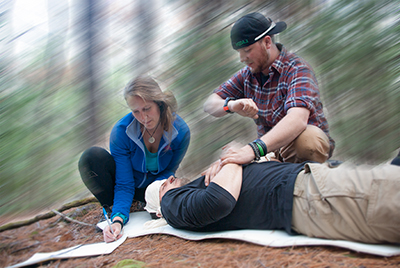

Core Courses
These fundamental courses represent a clear and natural progression from entry-level to professional, and are our most popular (over 5,000 students each year).
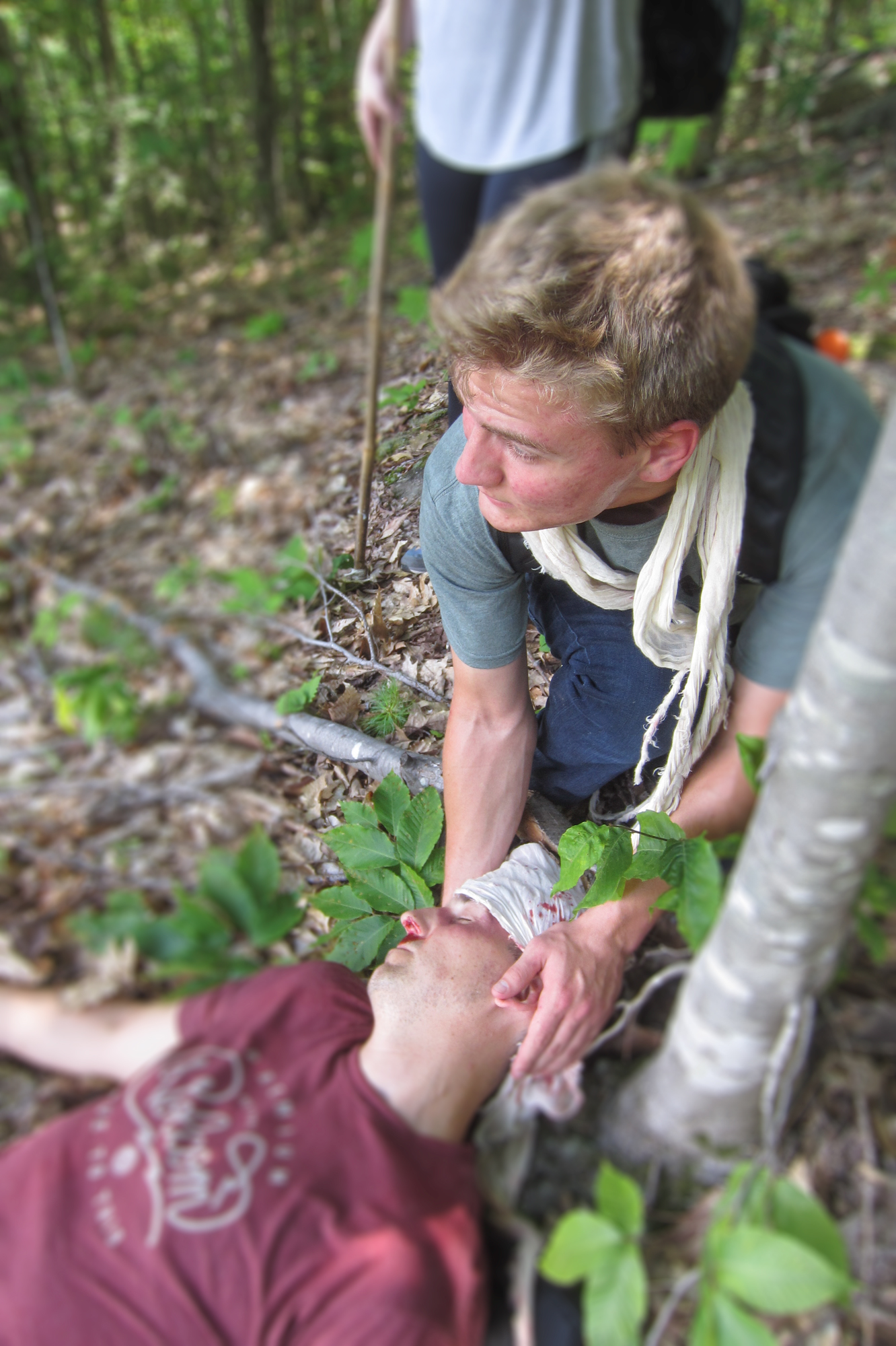
WFA SNAPSHOT
Where: All across the US.
When: Virtually anytime, check the schedule.
Length: 16 hours
Certification: 2- year SOLO cert, nationally recognized.
Age Restriction: minimum age is 14
WILDERNESS FIRST AID (WFA)
Accidents happen. People get hurt, sick, or lost. The temperature drops, the wind picks up, and it starts to rain. Would you know what to do? Many backcountry emergencies are preventable, and even when bad things happen, sometimes the wrong care can make things worse. By learning a few basic skills, you can make the difference between a good outcome and a bad one-and maybe even save a life.
WHO IS THE WFA FOR?
The WFA is the perfect course for the outdoor enthusiast or trip leader who wants a basic level of first aid training for short trips with family, friends, and outdoor groups. It also meets the ACA guidelines.
WHAT IS TAUGHT?
The WFA is 16 hours long (two days), and focuses on the basic skills of: Response and Assessment, Musculoskeletal Injuries, Environmental Emergencies, Survival Skills, Soft Tissue Injuries, and Medical Emergencies.
WHERE AND WHEN IS IT HELD?
The WFA is held around the world throughout the year. See Schedule.
HOW MUCH DOES IT COST?
The total price will vary depending on the sponsoring organization and what amenities (e.g. room and board) they include. The Course Schedule may list the specific price for each course, or sponsor information will be provided. WFA courses taught at the SOLO campus cost $200 (tuition only).
WHAT ABOUT ROOM AND BOARD?
This is also up to the sponsoring organization.
IS THERE AN EXAM?
Yes, there is ongoing evaluation of practical skills, and there are written assessments throughout the course.
DO I GET CERTIFIED?
Yes. You will receive a SOLO WFA certification, which is good for two years.
DOES THE WFA COUNT AS CONTINUING EDUCATION?
The WFA may give continuing ed credits (depending on the specific requirements for your certification) and is approved for recertifying SOLO’s Wilderness First Responder program.
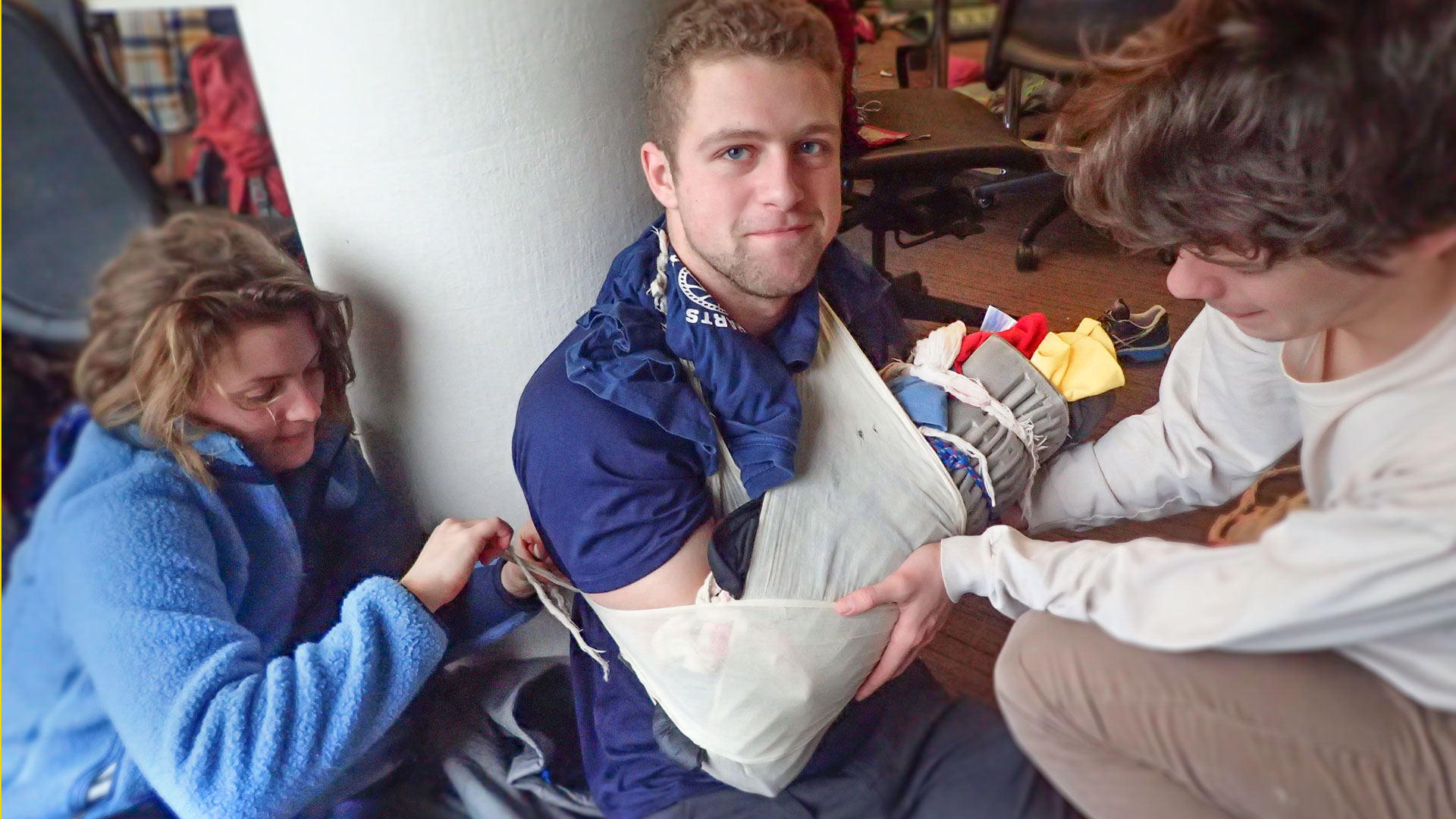
WFR SNAPSHOT
Where: All across the US.
When: Virtually anytime, check the schedule.
Length: 72+ hours
Certification: 3-year SOLO cert.
Age Restriction: Although the minimum age for WFR certification is 16, students wishing to take a WFR at the SOLO campus must be at least 18 years old, unless a parent stays in the dorm with them. There will be no lodging costs for the parent.
WILDERNESS FIRST RESPONDER (WFR)
SOLO’s Wilderness First Responder (WFR) course is the recognized industry standard for those who work as backcountry trip leaders, camp counselors, mountain guides, river guides, and ski patrollers.
WHO IS THE WFR COURSE FOR?
The WFR is the perfect course for anyone working in a position of leadership in an outdoor setting or for individuals who want a high level of wilderness medical training for extended personal backcountry trips or expeditions.
WHAT IS TAUGHT?
The WFR is 72+ hours long (8 to 10 days), and is a comprehensive and in-depth look at the standards and skills of dealing with: Response and Assessment, Musculoskeletal Injuries, Environmental Emergencies and Survival Skills, Soft Tissue Injuries, and Medical Emergencies. Although these appear to be the same basic topics covered in our two-day WFA course, they are covered far more extensively, and there is much more hands-on practice. Additional topics, such as CPR, are also included.
WHERE AND WHEN IS IT HELD?
The WFR is held around the world throughout the year. See Schedule.
HOW MUCH DOES IT COST?
The price will vary depending on the sponsor and what amenities, if any, they include. WFR courses taught at the SOLO campus cost $1095 (includes class-day meals and lodging).
WHAT ABOUT DAY STUDENTS?
This is also up to the sponsoring organization. The day-student price at the SOLO campus of $895 includes all meals, but no lodging.
IS THERE AN EXAM?
There is ongoing evaluation of practical skills, and a written test.
DO I GET CERTIFIED?
Yes. Your SOLO WFR certification is good for three years.
HOW DO I RECERTIFY?
You may take either a 2-day WFR Refresher Course or a 2-day WFA course (current SOLO WFRs only). Current WFRs who have completed a SOLO-approved WFR course from another program will only be able to recertify through SOLO by taking a SOLO Wilderness First Responder Recertification course.
EDUCATIONAL/FUNCTIONAL JOB REQUIREMENTS FOR WILDERNESS MEDICAL STUDENTS AND PROVIDERS
Wilderness First Responder and Wilderness EMT are job-training programs leading to certifications. Based on the Department of Transportation’s First Responder and EMT curriculums, the WFR and WEMT programs integrate wilderness and medical training. Please read all requirements before registering for a course
DOES THE WFR COUNT AS CONTINUING EDUCATION?
The WFR typically counts as continuing education credits, although it may depend on what certification you have. Street EMTs who take the WFR course may become certified as Wilderness EMTs.
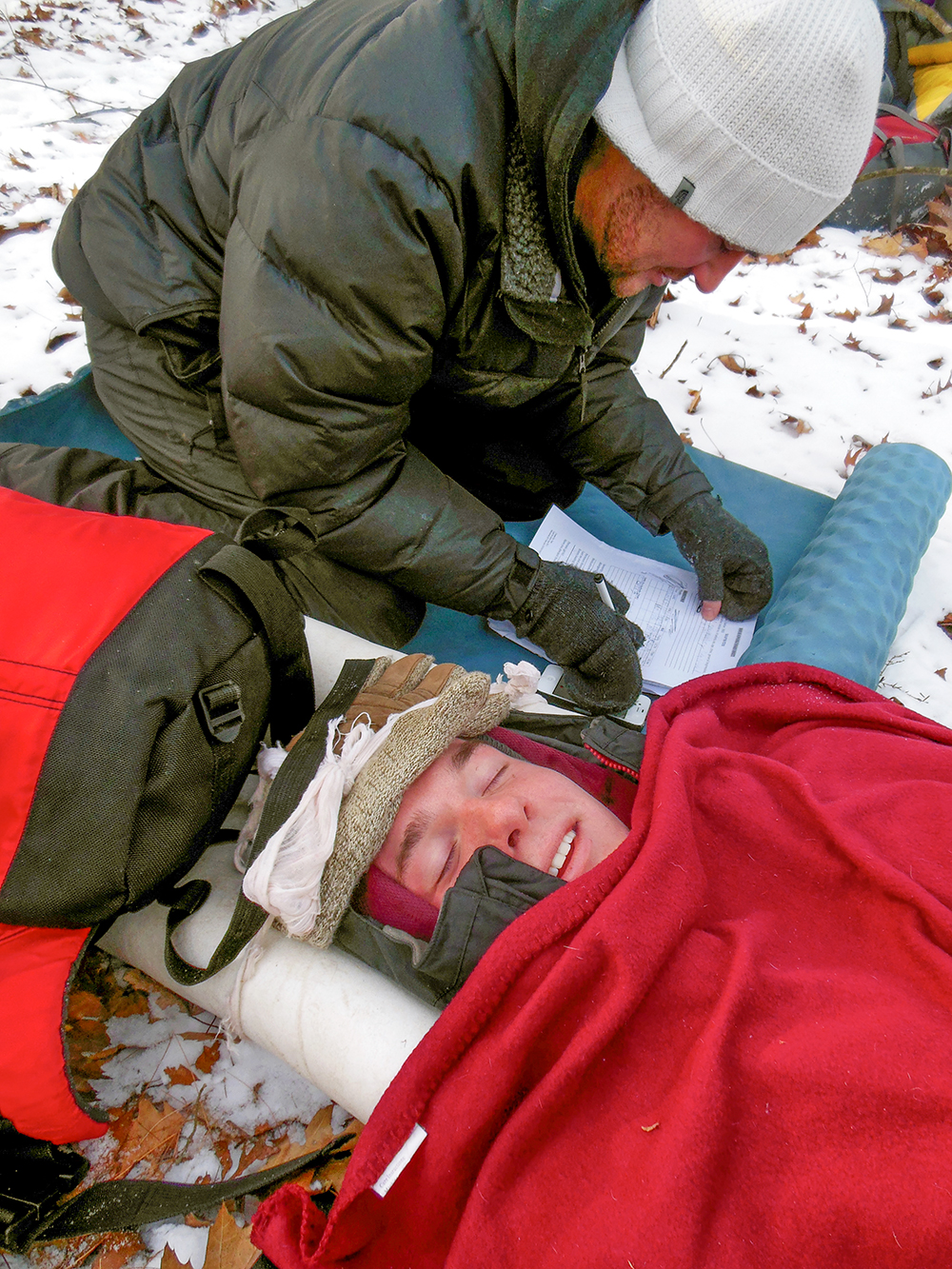
WEMT SNAPSHOT
Where: Primarily at the SOLO campus in Conway, NH.
When: Eight times per year at SOLO, check the schedule.
Length: 170+ hours
Certification: 3-year SOLO WFR and 2-year EMT upon successful completion of the National Registry practical and computer exams
Age Restriction: minimum age is 18
WILDERNESS EMERGENCY MEDICAL TECHNICIAN (WEMT)
The Wilderness Emergency Medical Technician (WEMT) course is SOLO’s flagship medical program. It is an intense, in-depth, month-long program designed for people who need a higher level of training.
WHAT IS TAUGHT?
The WEMT is 170+ hours long (typically taught in 19 days, spread out over four weeks, with weekends off), and combines the standard Department of Transportation Emergency (DOT) Medical Technician curriculum with wilderness-specific medical training that focuses on long-term care (our WFR curriculum).
WHERE AND WHEN IS IT HELD?
Although the WEMT course is held primarily at SOLO, it is occasionally offered at SOLO Southeast at Nantahala Outdoor Center, in North Carolina; and at Jackson Hole Learning Institute, in Wyoming. Eight WEMT courses are scheduled each year at SOLO. See Schedule.
HOW MUCH DOES IT COST?
Residential: $3,895 ($750 Deposit, $3,145 Balance) – Includes lodging and all meals.
Day Student: $3,395 ($750 Deposit, $2,645 Balance) – No lodging, includes all meals.
Both course prices include the $300 lab fee.
IS THERE AN EXAM?
Yes, there is ongoing evaluation of wilderness practical skills, and there is a written wilderness exam. At the end of the course, participants will take the National Registry computerized exam.
DO I GET CERTIFIED?
Upon successful completion of both exams, participants receive a two-year SOLO WEMT certification, a two-year AHA CPR certification, and a National Registry of Emergency Medical Technicians (NREMT) certification. It is the responsibility of each student to find out how certification and licensure work in their state.
HOW DO I RECERTIFY?
A Wild Day, or WFR – Recertification course recertifies the wilderness component for current WEMTs. Recertifying your national or state EMT license must be done through the national registry, or state recertification process. Check in with your agency to be sure you don’t miss your deadline.
HOW DO I UPGRADE MY EMT CERTIFICATION TO WEMT?
Current EMTs may upgrade by taking the 5-day SOLO WEMT Module.
EDUCATIONAL/FUNCTIONAL JOB REQUIREMENTS FOR WILDERNESS MEDICAL STUDENTS AND PROVIDERS
Wilderness First Responder and Wilderness EMT are job-training programs leading to certifications. Based on the Department of Transportation’s First Responder and EMT curriculums, the WFR and WEMT programs integrate wilderness and medical training.
PARTICIPANTS MUST BE 18 TO TAKE THIS COURSE.
Specialty Courses
These courses supplement our core courses by focusing on specific training needs or certifications.
Please check the schedule page, email, or call us, to see when they are running.
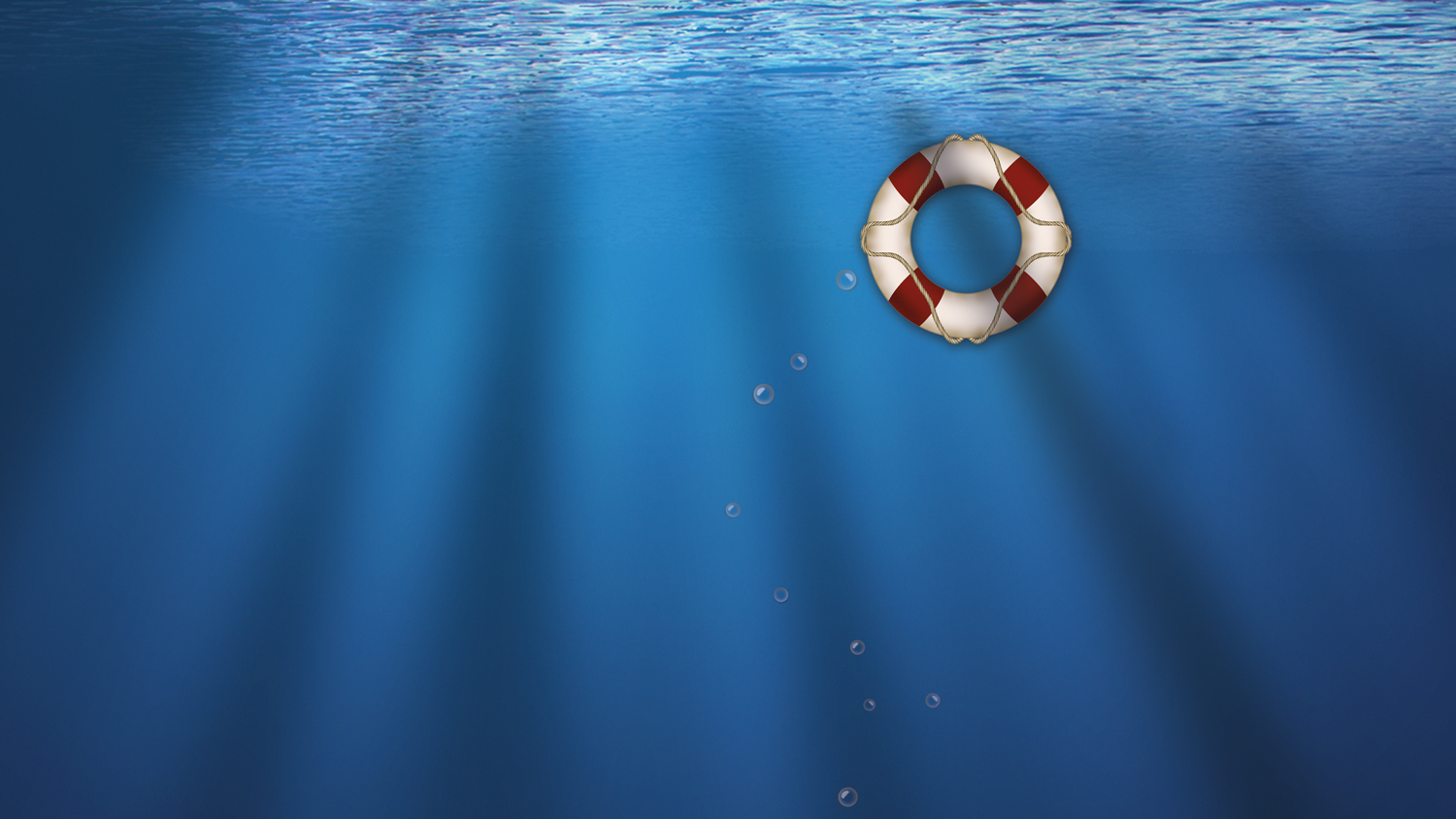
Wilderness First Aid Afloat
Click for information
WHAT IS TAUGHT?
The SOLO Wilderness First Aid Afloat course contains all the same information included in the SOLO Wilderness First Aid course with the exception of altitude illness. It also includes additional topics that are of specific interest to boaters, such as sea sickness, marine bites and stings, and some types of injuries that are more common in marine environments. This new program is also slightly different from the regular SOLO WFA course in that topics like sending for help have been adapted to be more applicable to situations that might arise on the water and in a water-based environment. The WFA Afloat meets all requirements of the United States Coast Guard for a Wilderness First Aid Course, and is listed as an approved course and curriculum by the USCG.
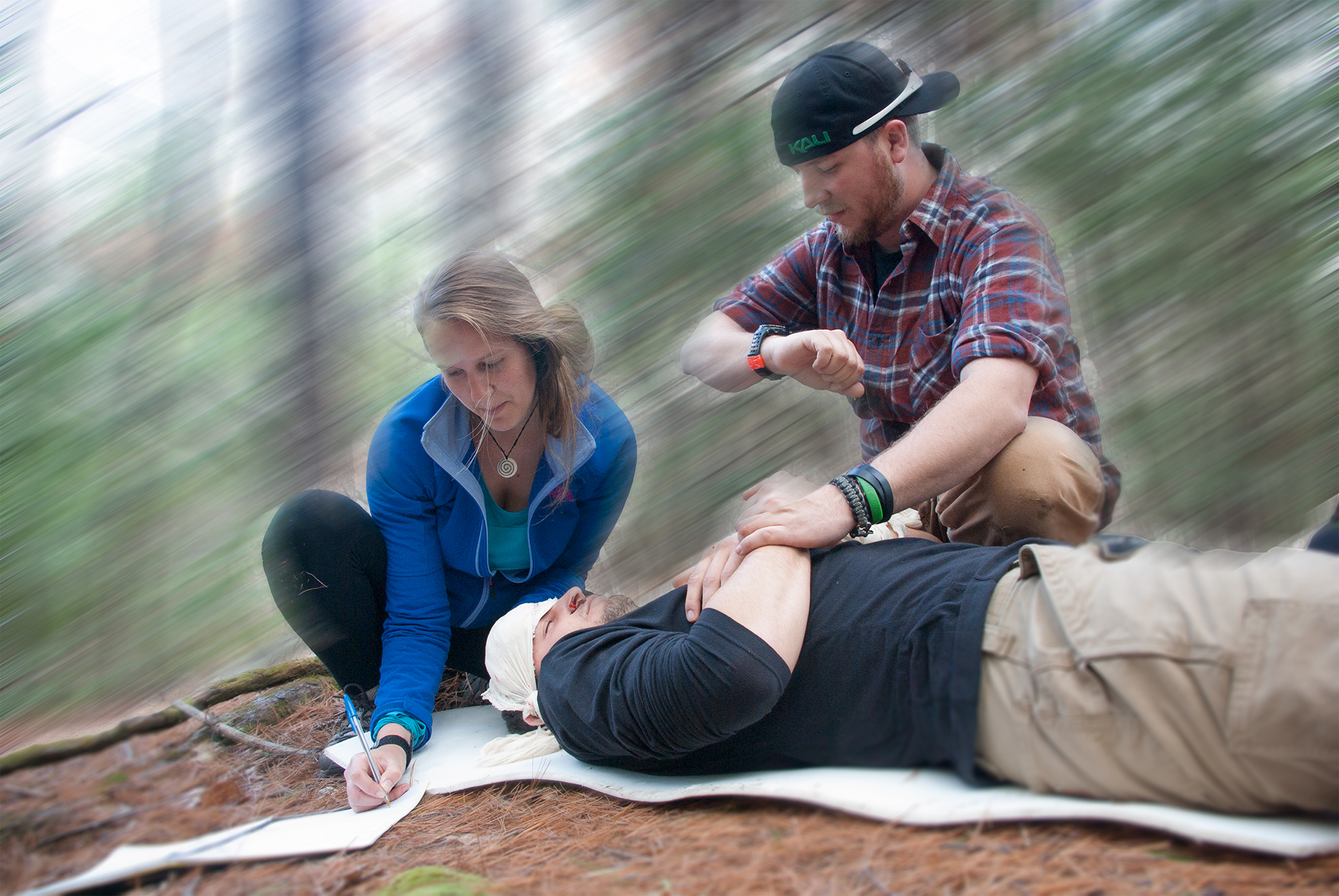
Advanced Wilderness First Aid (AWFA) Parts I and II
Click for information
WHAT IS TAUGHT?
The AWFA course goes into greater depth than the WFA on the basic first aid subjects. The course emphasizes leadership skills and presents new skills such as litter packaging. Students must have a current SOLO WFA certification in order to take the AWFA Part II.

GeoMedic™
Click for information
WHAT IS TAUGHT?
Geo Medic™, a course SOLO successfully offered in the 90’s, is now being run by SOLO Schools International. Based on our experiences in Haiti for several months after the 2010 earthquake, and in numerous trips to developing nations in Latin America, Africa, and Asia, where we both taught first aid and staffed medical clinics, we feel this course has more relevance than ever.
The challenge of providing care in disaster situations or remote settings in developing nations is difficult to meet with even current Wilderness Medicine training. This course is designed to teach skills to providers at or above the level of EMT which will be most helpful in either of these unique situations.
Included (but not limited to) in the list of topics are self-preservation (safety, sanitation, and sustenance); improvised splinting and long-term fracture care involving casting; long-term wound care (ranging from controlling bleeding to the point of hemostasis, from cleaning wounds to management, emphasizing prevention of infection, to wound closure with sutures if needed in a remote care setting).
There are in-depth presentations on environmental and disaster issues including crush injuries and compartment syndrome, respiratory problems and infectious diseases, tropical diseases and their treatments, and lots of hands-on opportunities for practice. While many of these topics sound like a repetition of typical wilderness medical issues, they will be expanded upon, and advanced techniques will be added in and practiced.
To find out when the next GeoMedic course is running, please visit the SOLO Schools International website.
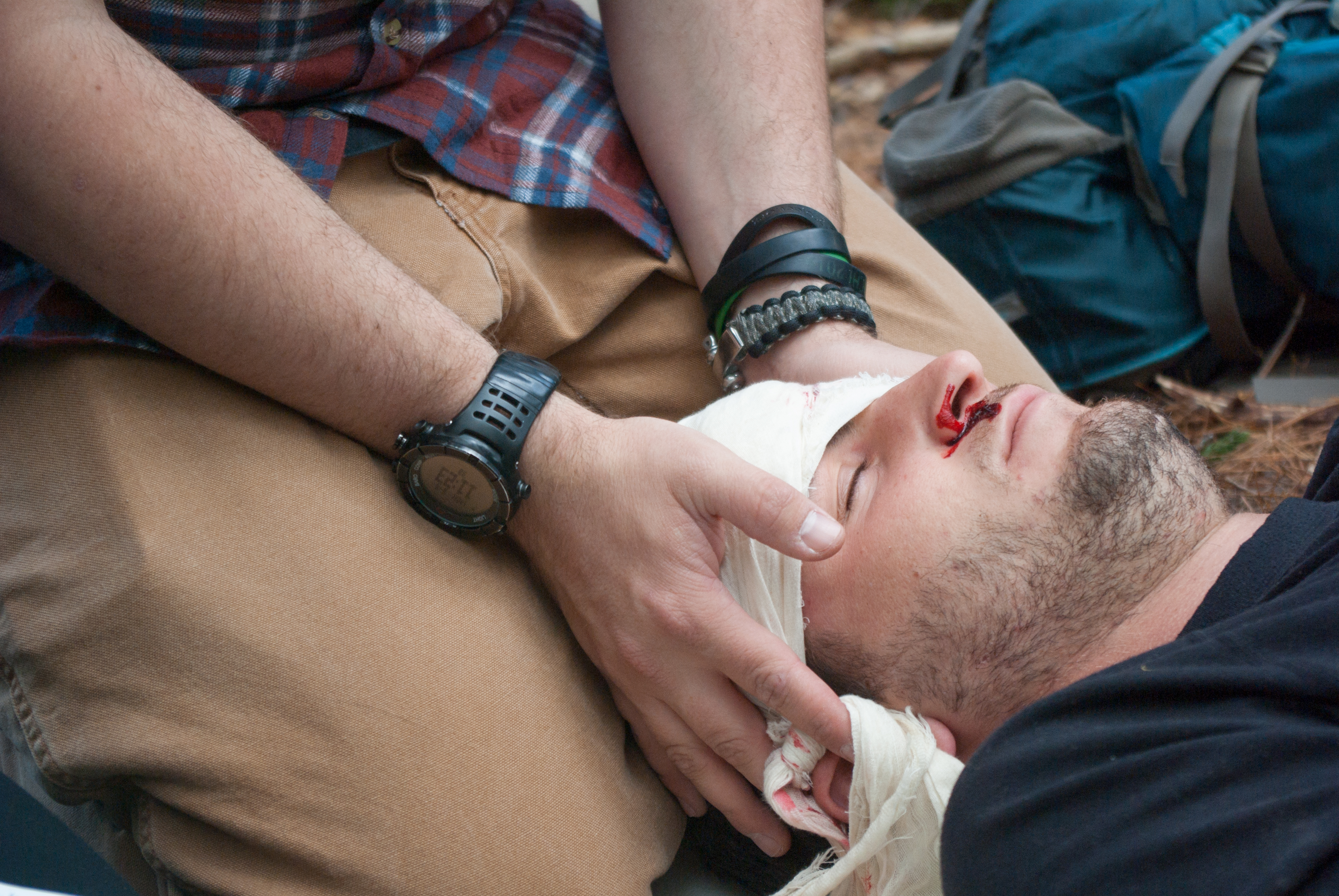
Wilderness First Responder Review
Click for information
WHAT IS TAUGHT?
This two-day course recertifies current SOLO WFRs, refocusing on the fundamentals and running students through many scenarios. Alternately, you can recertify your WFR by taking a 2-day WFA course.
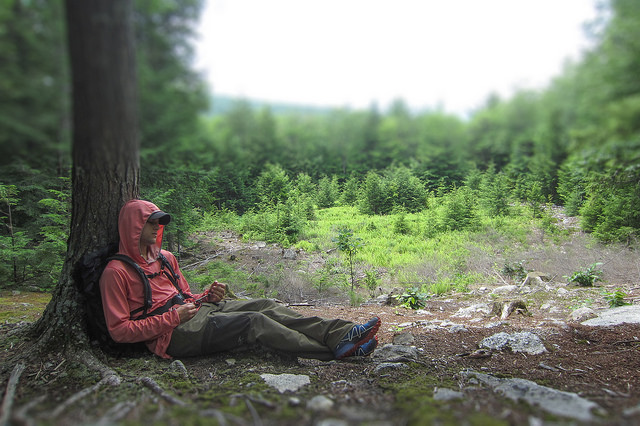
Wild Day
Click for information
WHAT IS TAUGHT?
This one-day course re-certifies the wilderness component for current WEMTs. It is always scheduled at the end of a SOLO EMT RTP course.
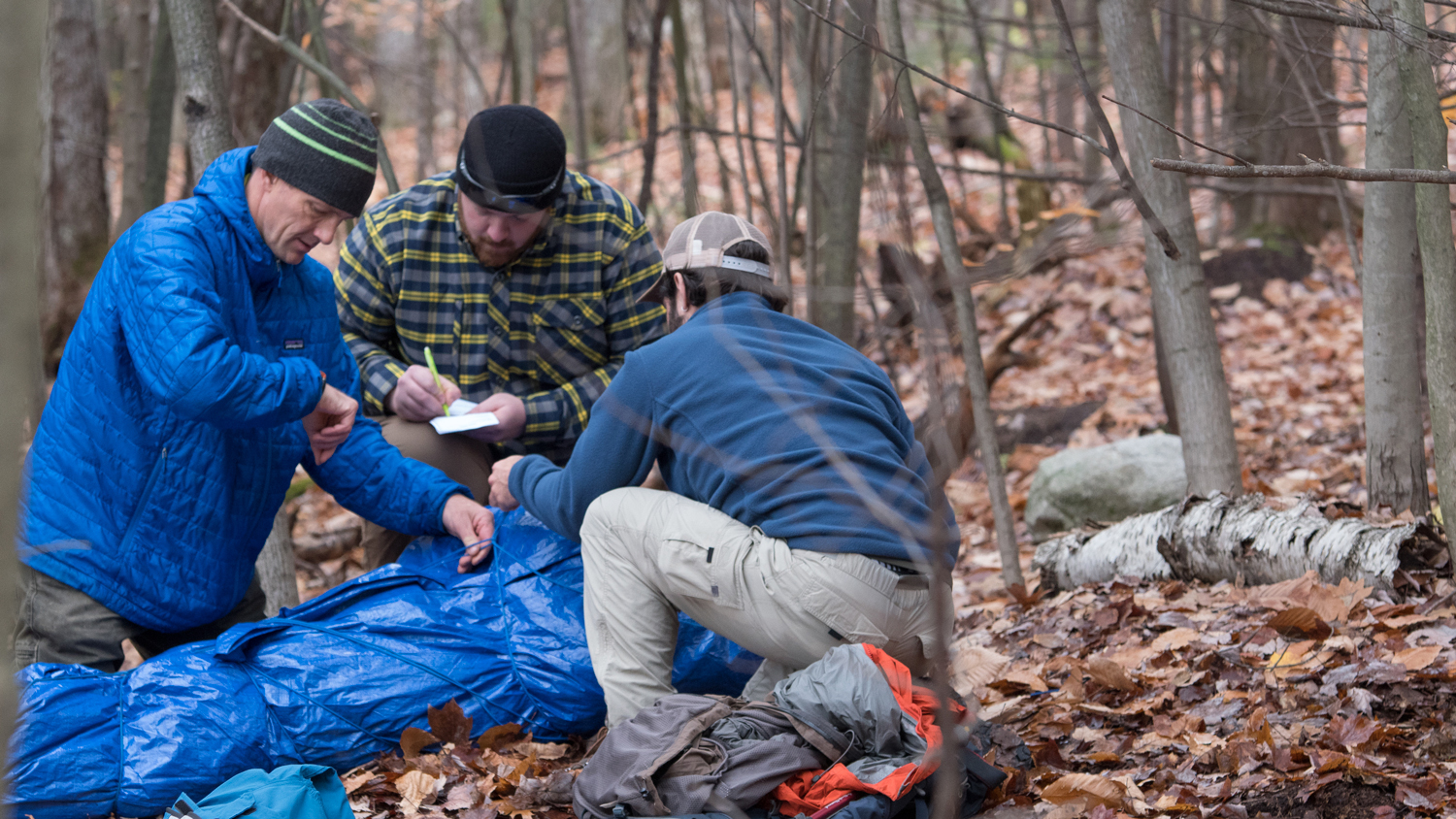
First 5 Minutes
Click for information
WHAT IS TAUGHT?
This course is intensively focused on dealing with immediate life threats during the first five minutes of a medical crisis. The person isn’t breathing, they have no heartbeat, or they have major bleeding. You will learn how to open an airway and provide artificial respirations, do chest compressions and use an automated external defibrillator (AED), and control severe bleeding. That’s it. Four hours, just a few skills, and you’ll be prepared to immediately step in and help save a life. This is a perfect course for school or business personnel, camp counselors, or anyone who lives or works around people—which is just about all of us. No previous first aid training is required. Check the schedule to see when the next First 5 Minutes course will be held near you.
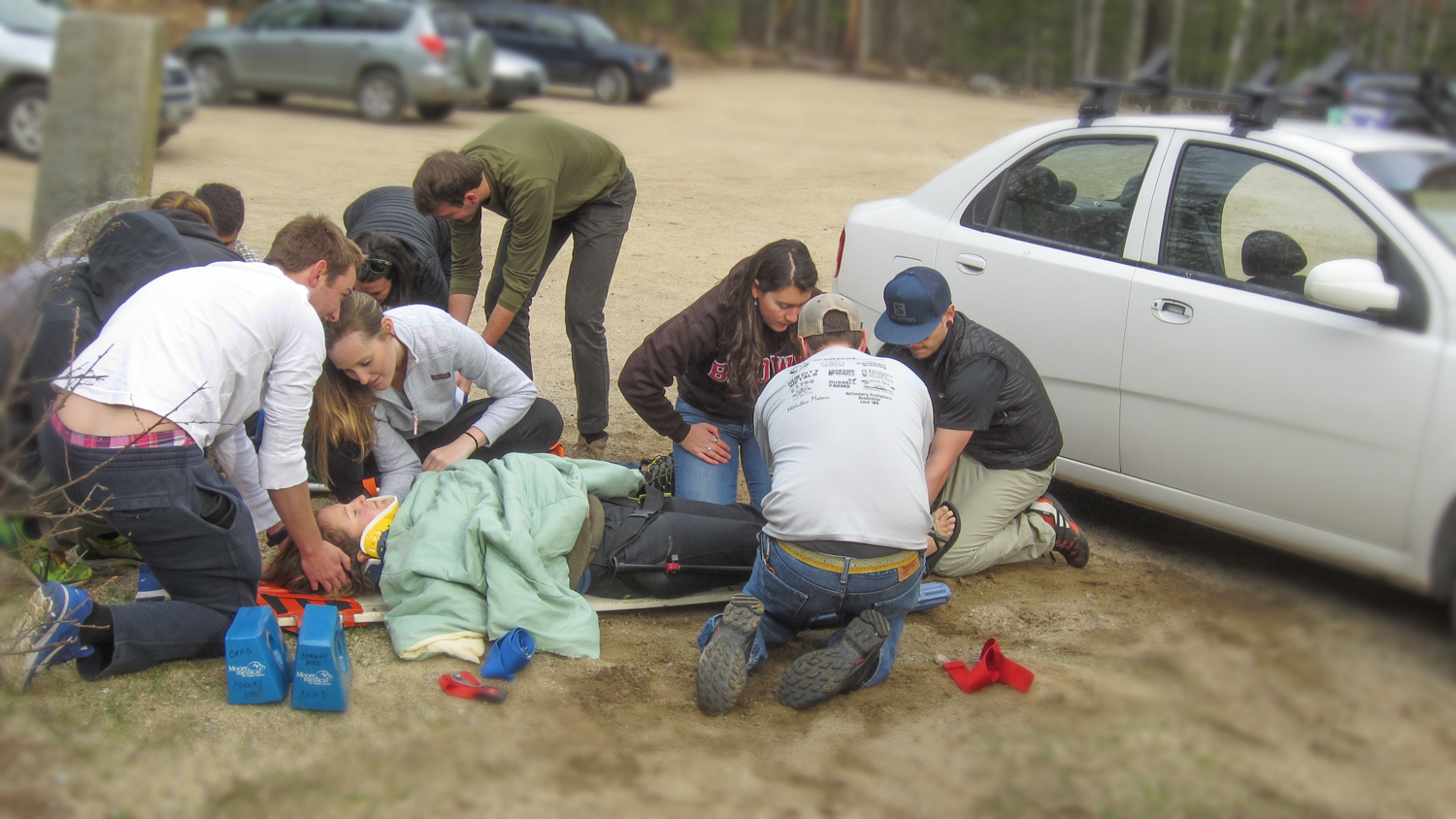
Urban First Aid
Click for information
WHAT IS TAUGHT?
SOLO First Aid provides students with the concept of prevention from common first aid problems to the skills to safely assess an emergent scene, as well as, how to protect oneself when dealing with a patient, narrowing down the possible problem, and providing temporary treatment until EMS arrives.
We also offer the following courses. Check the schedule, call, or email for more information
DISASTER WILDERNESS FIRST RESPONDER: The standard WFR curricula, with added material and emphasis on disaster situations.
PREPPING FOR DISASTER: This is an eight- day course for anyone looking to gain experience and knowledge in a disaster situation which focuses on the “in between” time of a disaster and includes shelter-building, fire-making, wilderness first aid, pet first aid, and firearms safety.
SEARCH AND RESCUE: This is a customizable course that can include SAR, navigation, and other related topics.
ACLS / PALS / PEARS: These acronyms stand for Advanced Cardiac Life Support, Pediatric Advanced Life Support, and Pediatric Emergency Assessment, Recognition, and Stabilization.
CARDIOPULMONARY RESCUSICATION (CPR): CPR is part of our core courses, and can also be taught as a stand-alone program.
AWFA-to-WFR BRIDGE: This five-day program is designed for people who currently hold an Advanced Wilderness First Aid certification, and want to upgrade to a WFR certification.
